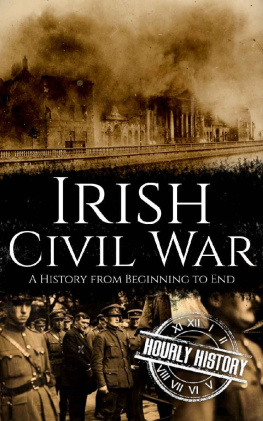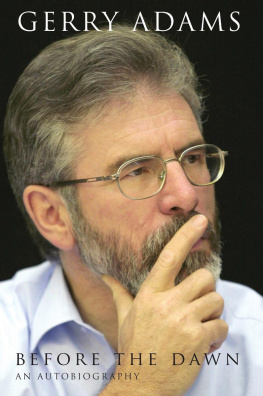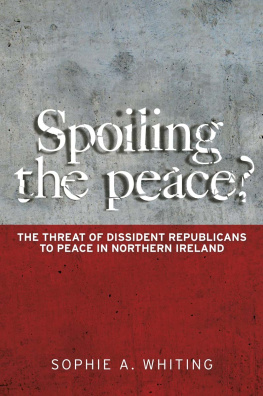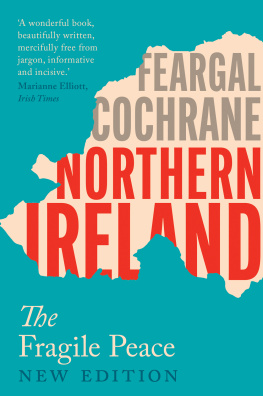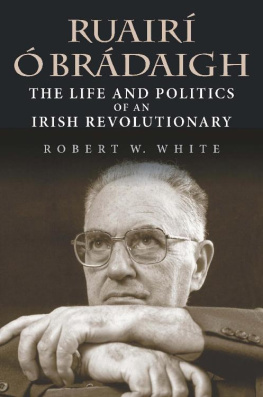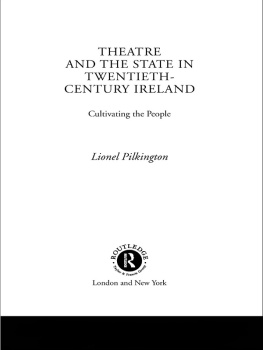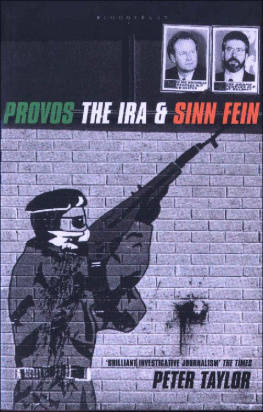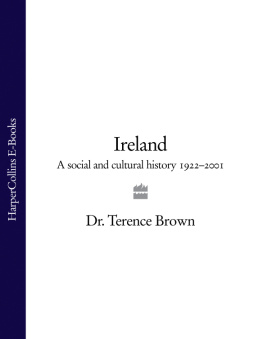Cover
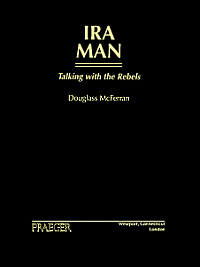
| title | : | IRA Man : Talking With the Rebels |
| author | : | McFerran, Douglass. |
| publisher | : | Greenwood Publishing Group |
| isbn10 | asin | : | 0275955915 |
| print isbn13 | : | 9780275955915 |
| ebook isbn13 | : | 9780313047015 |
| language | : | English |
| subject | Irish Republican Army--History, Irish Republican Army, Political violence--Ulster (Northern Ireland and Ireland) , Revolutionaries--Ulster (Northern Ireland and Ireland) , Ulster (Northern Ireland and Ireland)--History, Military. |
| publication date | : | 1997 |
| lcc | : | DA990.U46M139 1997eb |
| ddc | : | 941.6 |
| subject | : | Irish Republican Army--History, Irish Republican Army, Political violence--Ulster (Northern Ireland and Ireland) , Revolutionaries--Ulster (Northern Ireland and Ireland) , Ulster (Northern Ireland and Ireland)--History, Military. |
Page i
This page intentionally left blank.
Page ii
This page intentionally left blank.
Page iii
IRA MAN
Talking with the Rebels
Douglass McFerran

Page iv
Library of Congress Cataloging-in-Publication Data
McFerran, Douglass, 1934
IRA man: talking with the rebels/Douglass McFerran.
p. cm.
Includes bibliographical references and index.
ISBN 0-275-95591-5 (alk. paper)
1. Ulster (Northern Ireland and Ireland)History, Military.
2. Political violenceUlster (Northern Ireland and Ireland)
3. RevolutionariesUlster (Northern Ireland and Ireland) 4. Irish
Republican Army. I. Title.
DA990.U46M139 1997
941.6dc21 978862
British Library Cataloguing in Publication Data is available.
Copyright 1997 by Douglass McFerran
All rights reserved. No portion of this book may be
reproduced, by any process or technique, without the
express written consent of the publisher.
Library of Congress Catalog Card Number: 978862
ISBN: 0-275-95591-5
First published in 1997
Praeger Publishers, 88 Post Road West, Westport, CT 06881
An imprint of Greenwood Publishing Group, Inc.
Printed in the United States of America

The paper used in this book complies with the
Permanent Paper Standard issued by the National
Information Standards Organization (Z39.481984).
10 9 8 7 6 5 4 3 2 1
Page v
This book is for Adrienne and for Michael, each of whom made it possible even if in quite different ways.
Page vi
This page intentionally left blank.
Page vii
Contents
Introduction | ix |
Abbreviations | xv |
Part I:
Republicans Keeping the Faith | |
| The Divided Island | |
| We Are All Volunteers | |
| Rule of the Redcoats | |
Part II:
A Nation of Rebels | |
| The Catholic Problem | |
| The Easter Uprising and Its Consequences | |
| The Troubles | |
Part III:
Talking with the Rebels | |
| Back to Britain | |
Page viii
| The Marching Season | |
| The Streets of Belfast | |
Part IV:
The Past, the Future | |
| How It Could Have Been | |
| Playing the Orange Card | |
| The Other Nationalists | |
| An Irish Dilemma | |
Suggestions for Further Reading | |
Index | |
Photo essay follows Chapter 6.
Page ix
Introduction
This is a book about what is happening in Ireland, specifically about the guerrilla war of the group labeled IRAthe Irish Republican Army. Today there are only a few hundred active IRA men, less than a battalion in military terms, who command the attention of some thirty thousand soldiers and policemen in the six northern countieswhat is called Ulster or Northern Ireland by the Britishand countless more security experts and counterterrorist operatives in England, Europe, and even the United States. To the extent the IRA is able to take the war to its enemy, as it has demonstrated repeatedly through the bombings in England, each volunteer has the potential to disrupt the lives of millions. To understand why this situation ever came about, it is necessary to learn as much as possible about the mind-set not just of the IRA man but also of all those who assist him, since a strong level of support within the community is essential to any successful guerrilla operation.
The task I set myself over a year ago was to get as close as I could to the lived reality of those who call themselves republicans (supporters of the Irish Republic envisioned in the rebellion of 1916, depicted in the film Michael Collins but, in their eyes, not to be realized until the last British soldier has left Irish soil), and thus think of the IRA as their own army and, to some extent, their only true government. Along the way I became something of an IRA man myself, at least to the extent that I no longer just discussed the IRA but now also defended it.
Page x
Allow me to explain.
Ireland is a beautiful island, physically cold but humanly warm. It is also an island with a long history of division determined not by its geography but by decisions made on its neighbor island to the east. Twenty-six of its counties and five-sixths of its landmass, with about three and a half million people, are governed by the Republic of Ireland with its capital in Dublin. The remaining six counties in the northeast of the island, with about a million and a half more people, are part of the United Kingdom and are governed from London. For as long as all but the most elderly Irish can remember, there has been conflict between those who want to end this partition (termed nationalists or republicans) and those who do not (termed unionists or loyalists). This conflict finds its sharpest expression in a guerrilla war waged against the British government by a group that has also been at odds with the government in Dublin since the 1922 adoption of a treaty that established partition. It is a war that most Americans do not understand, and it seems true enough that most British citizens are not any better able to explain it.
Next page

